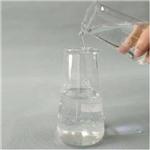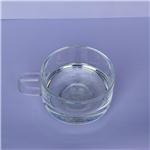- Dichloroethane
-

- $50.00 / 1kg
-
2024-12-17
- CAS:1300-21-6
- Min. Order: 1kg
- Purity: 99%
- Supply Ability: 500
- Dichloroethane
-

- $10.00 / 1KG
-
2024-11-14
- CAS:1300-21-6
- Min. Order: 1KG
- Purity: 99%
- Supply Ability: 10 mt
- Dichloroethane
-

- $0.00 / 1KG
-
2024-10-31
- CAS:1300-21-6
- Min. Order: 1KG
- Purity: 99%
- Supply Ability: 500000kg
|
| | Dichloroethane Chemical Properties |
| Boiling point | 82-84 °C | | density | 1.2521 g/cm3(Temp: 204 °C) | | Dielectric constant | 16.7(20.0℃) | | EPA Substance Registry System | Dichloroethane (1300-21-6) |
| | Dichloroethane Usage And Synthesis |
| Description | Dichloroethane is a colorless and transparent oily liquid with a chloroform-like odor and a sweet taste. It is very easy soluble in water, miscible with ethanol, chloroform and ether,it also can dissolve oil and grease, grease, paraffin. It is mainly used as a solvent. | | Uses | Dichloroethane can be used as a standard reagent for chromatography; it is also used as a solvent for resins, rubber, cellulose acetate, cellulose esters, paints and polymers such as polystyrene; it is also used as a raw material for organic synthesis. Dichloroethane is also used in photography, xerographic printing and water softening. | | Incompatibility | Dichloroethane is incompatible with strong oxidizing agents, strong bases, chemically active metals (such as aluminum or magnesium powder, sodium, potassium). | | Storage | Dichloroethane can be contained in metal cylinders to prevent mechanical damage. It should be stored in a cool and ventilated place, preferably in the open air or in an attached warehouse; indoors should be placed in a standard flammable liquid warehouse, away from fire sources. Separated from oxidants. | | Toxicity |
Acute oral LD50: 670-890 mg/kg for rats, 870-950 mg/kg for mice, and 860-970 mg/kg for rabbits. A single overdose or repeated exposure to dichloroethane can damage the liver and kidneys. From the perspective of chronic toxicity, it is safer than carbon tetrachloride. In practice, most people cannot tolerate or vomit at sublethal concentrations of dichloroethane.
| | Definition | ChEBI: 1,1-Dichloroethane is an organochlorine compound. |
| | Dichloroethane Preparation Products And Raw materials |
|